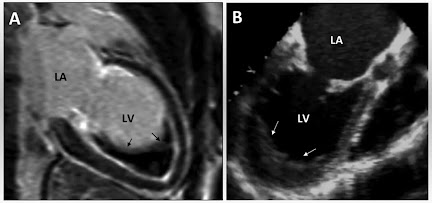Williams GYNECOLOGY
CONTENTS
Editors
Contributors
Artists
Preface
Acknowledgments
SECTION I : BENIGN GENERAL GYNECOLOGY
1. Well Woman Care
2. Techniques Use For Imaging In Gynecology
3. Gynecologic Infections
4. Benign Disorders Of The Lower Genital Tract
5. Contraception And Sterilization
6. First Trimester Abortion
7. Ectopic Pregnancy
8. Abnormal Uterine Bleeding
9. Pelvic Mass
10. Endometriosis
11. Pelvic Pain
12. Breast Disease
13. Psychological Issue And Female Sexuality
14. Pediatrics Gynecology
SECTION II : REPRODUCTIVE ENDOCRINOLOGY, INFERTILITY AND THE MENOPAUSE
15. Reproductive Endocrinology
16. Amenorrhea
17. Polycystic Ovarian Syndrome and Hyperandrogenism
18. Anatomic Disorders
19. Evaluation Of the Infertile Couple
20. Treatment Of the infertile Couple
21. Menopausal Transition
22. The Mature Woman
SECTION III : FEMALE PELVIC MEDICINE AND RECONSTRUCTIVE SURGERY
23. Urinary Incontinence
24. Pelvic Organ Prolapse
25.Anal Incontinence and Functional Anorectal Disorders
26. Genitourinary Fistula and Urethral Diverticulum
SECTION IV : GYNECOLOGIC ONCOLOGY
27. Principles of Chemotherapy
28. Principles of Radiation Therapy
29. Preinvasive Lesions of the Lower Genital Tract
30. Cervical Cancer
31. Vulvar Cancer
32. Vaginal Cancer
33. Endometrial Cancer
34. Uterine Sarcoma
35. Epithelial Ovarian Cancer
36. Ovarian Germ Cell and Sex Cord-Stromal Tumours
37. Gestational Trophoblastic Disease
38. Anatomy
39. Preoperative Considerations
40. Intraoperative Considerations
41. Minimally Invasive Surgery Fundamentals
42. Postoperative Considerations
43. Surgery for Benign Gynecologic Disorders
30. Cervical Cancer
31. Vulvar Cancer
32. Vaginal Cancer
33. Endometrial Cancer
34. Uterine Sarcoma
35. Epithelial Ovarian Cancer
36. Ovarian Germ Cell and Sex Cord-Stromal Tumours
37. Gestational Trophoblastic Disease
SECTION V : ASPECTS OF GYNECOLOGIC SURGERY
39. Preoperative Considerations
40. Intraoperative Considerations
41. Minimally Invasive Surgery Fundamentals
42. Postoperative Considerations
SECTION VI : ATLAS OF GYNECOLOGIC SURGERY
- Mid line Vertical Incision
- Pfannenstiel Incision
- Cherney Incision
- Maylard Incision
- Ovarian Cystectomy
- Salpingo-oophorectomy
- Interval Partial Salpingectomy
- Salpingectomy and Salpingostomy
- Sornuostomy and Cornual Wedge Resection
- Abdominal Myomectomy for Prolapsed Leiomyoma
- Vaginal Myomectomy for Prolapsed Leiomyoma
- Abdominal Hysterectomy
- Vaginal Hysterectomy
- Trachelectomy
- Sharp Dilatation and Curettage
- Suction Dilatation and Currettage
- Hymenectomy
- Bartholin Gland Duct Incision and Drainage
- Brtholin Gland Duct Marsupialization
- Bartholin Gland Duct Cystectomy
- Vulvar Abscess Incision and Drainage
- Vestibulectomy
- Labia Minora Reduction
- Vaginal Septum Excision
- Mc Indoe Procedure
- Treatment of Preinvasive Ectocervical Lesions
- Cervical Conization
- Treatment of Vulvar Intraepithelial Neoplasia
44. Minimally Invasive Surgery
- Diagnostic Laparoscopy
- Laparoscopic Sterilization
- Laparoscopic Salpingectomy
- Laparoscopic Salpingostomy
- Laparoscopic Ovarian Cystectomy
- Laparoscopic Salpingo-oophorectomy
- Ovarian Drilling
- Laparoscopic Myomectomy
- Laparoscopic Hysterectomy
- Laparoscopic Supracervical Hysterectomy
- Total Laparoscopic Hysterectomy
- Diagnostic Hysterectomy
- Hysteroscpic Polypectomy
- Hysteroscopic Myomectomy
- Endometrial Ablation Procedure
- Transcervical Sterilization
- Hysteroscopic Septoplasty
- Proximal Fallopian Tube Cannulation
- Lysis of Intrauterine Adhesions
45. Surgeries for Pelvic Floor Disorders
- Diagnostic and Operative Cystoscopy and Urethroscopy
- Burch Colposuspension
- Tension-free Vaginal Tape
- Transobturator Tape Sling
- Pubovaginal Sling
- Urethral Bulking Injections
- Urethrolysis
- Mid urethral Sling Release
- Urethral Diverticulum Repair
- Vesicovaginal Fistula Repair
- Martius Bulbocavernosus Fat Pad Flap
- Sacral Neuromodulation
- Anterior Colporrhaphy
- Abdominal Paraveginal Defect Repair
- Posterior Colporrhaphy
- Perineorrhaphy
- Abdominal Sacrocolpopexy
- Minimally Invasive Sacrocolpopexy
- Vaginal Uterosacral Ligament Suspension
- Abdominal Uterosacral Ligament Suspension
- Sacrospinous Ligament Fixation
- Mc Call Culdoplasty
- Abdominal Culdoplasty Procedure
- Colpocleisis
- Anal Sphincteroplasty
- Rectovaginal Fistula Repair
46. Surgeries for Gynecologic Malignancies
- Radical Abdominal Hysterectomy (type iii)
- Modified Radical Abdominal Hysterectomy (type ii)
- Minimally Invasive Radical Hysterectomy
- Total Pelvic Extenteration
- Anterior Pelvic Extenteration
- Posterior Pelvic Extenteration
- Incontinent Urinary Conduit
- Continent Urinary Conduit
- Vaginal Reconstruction
- Pelvic Lymphadenectomy
- Paraaortic Lymphadenectomy
- Minimally Invasive Staging for Gynecologic Malignancies
- En Bloc Pelvic Resection
- Omentectomy
- Splenectomy
- Diaphargmatic Surgery
- Colostomy
- Large Bowel Resection
- Iliostomy
- Small Bowel Resection
- Low Anterior Resection
- Intestinal Bypass
- Appendectomy
- Skinning Vulvectomy
- Radical Partial Vulvectomy
- Radical Complete Vulvectomy
- Inguinofemoral Lymphadenectomy
- Reconstructive Grafts and Flaps
INDEX




















